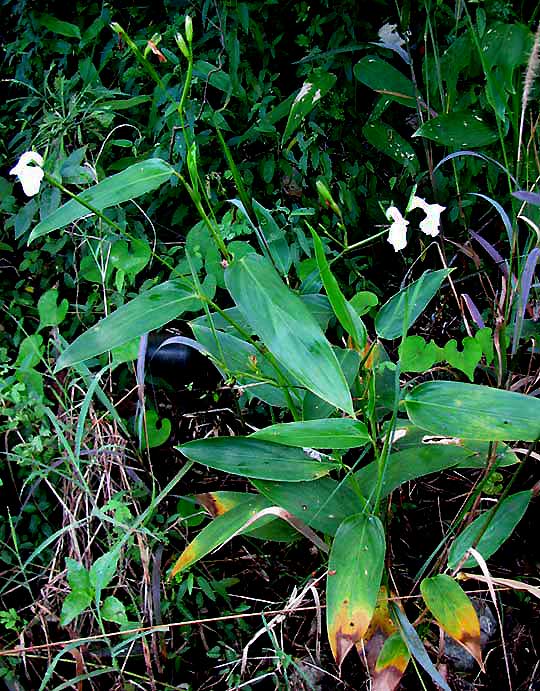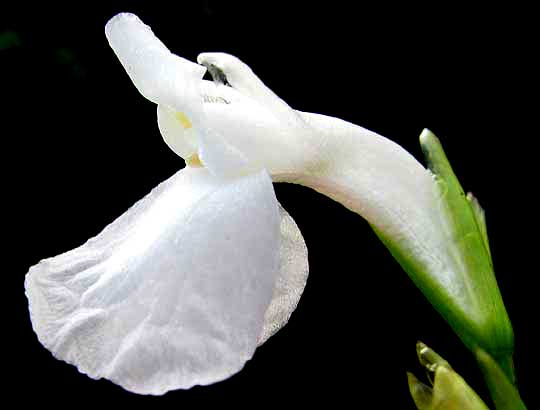Excerpts from Jim Conrad's
Naturalist Newsletter
from the September 26, 2010 Newsletter issued from Hacienda Chichen Resort beside Chichén Itzá Ruins, central Yucatán, MÉXICO; limestone bedrock, elevation ~39m (~128ft), ~N20.676°, ~W88.569°
MARANTA IN A DITCH
Biking the road connecting Pisté with the toll road just to the north, the white flowers of a knee-high herb in the ditch beside the road caught my eye. You can see the grass-leafed, orchidy-flowered plant below:

In this part of the world if you see a terrestrial plant with broad, parallel-veined, grasslike blades like those in the picture, but bearing flowers that are too large and showy ever to be grasses, five plant families should come to mind: the Banana, Orchid, Ginger, Canna and Maranta Families. Orchids and Banana Family members have their own unique kinds of flowers, so if the plant isn't in one of those distinctive families you can quickly discard them as you try to ID the plant.
Of the three remaining families, the flowers in the Ginger Family typically are arranged in spikes or spike-like inflorescences in which one flowers or small grouping of flowers are subtended by a conspicuous bract, which is a modified, usually much- reduced leaf. You can see that our flowers are held loosely in a diffuse inflorescence, so the Ginger Family can be disqualified.
That leaves the Canna and Maranta Families. Canna Family flowers usually are over two inches long (5 cm) while Maranta Family flowers are usually less than one inch (2.5 cm). The flowers in the picture are a little over one inch long (3 cm). Therefore: Maranta.
If we had fruits, we'd see that in the Canna Family ovary cells contain many ovules per cell, while in the Maranta Family there's only one.
This is MARANTA GIBBA, a denizen of moist soil, thus at home in this ditch holding water in a land where rainfall usually seeps underground very fast, even in the rainy season. You can see one of the plant's snow- white, bilaterally symmetrical (zygomorphic) flowers below:

Maranta gibba occurs from southern Mexico and the Yucatán, spottily through Central America and the West Indies, into northern South America.